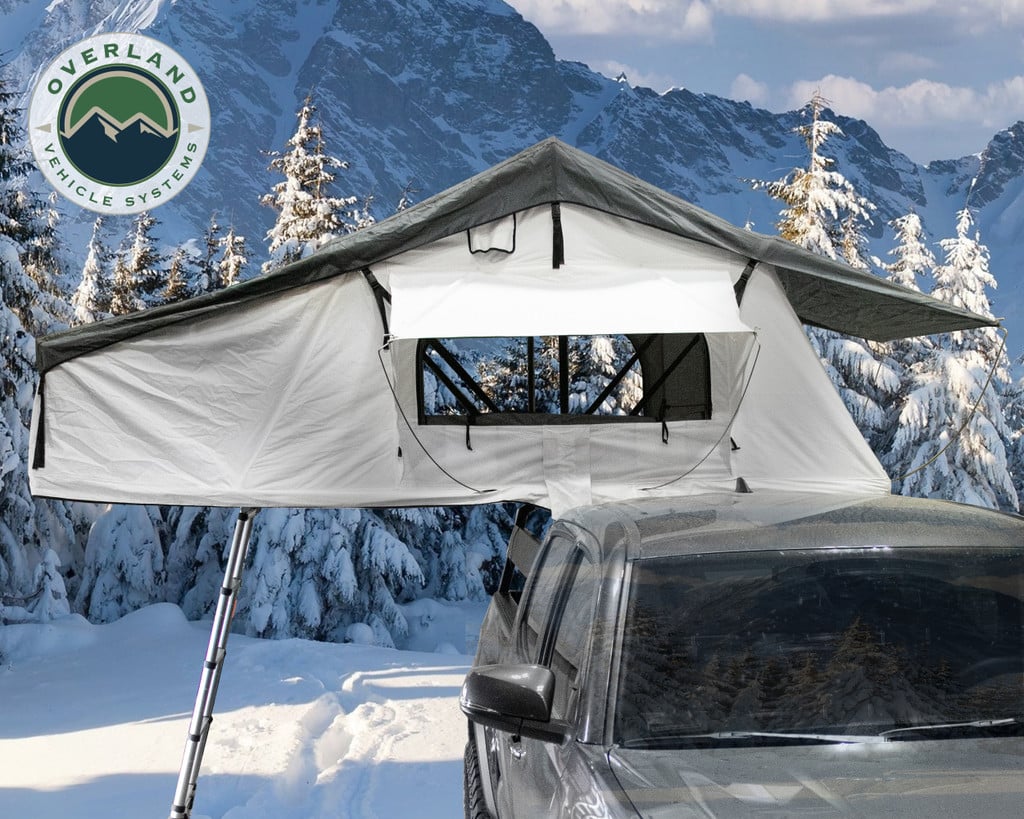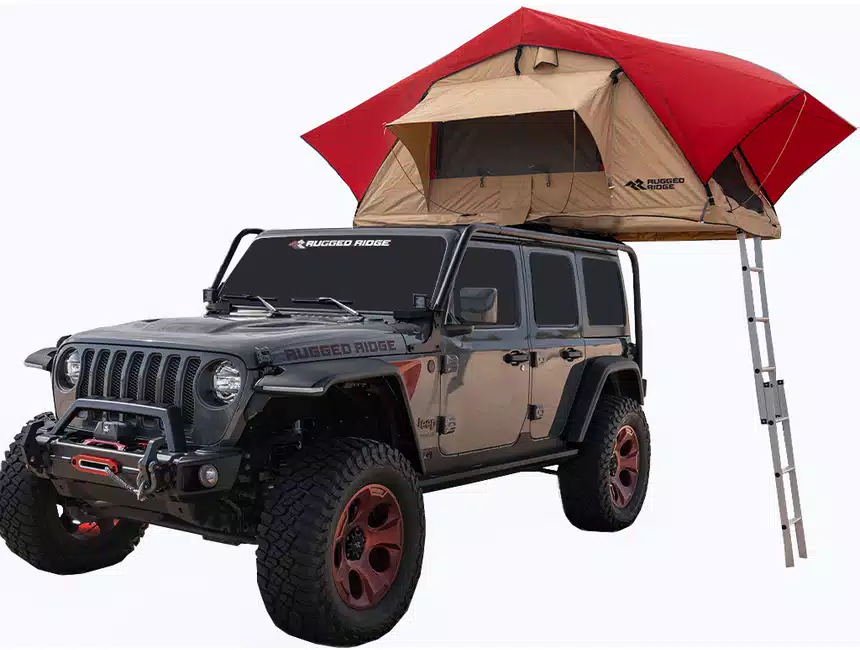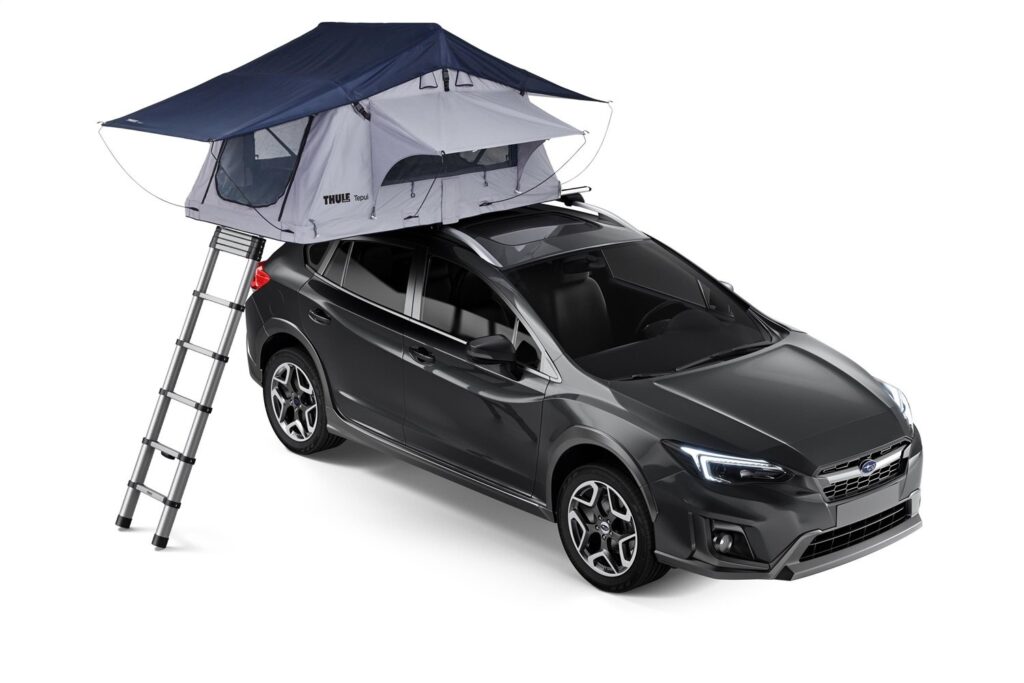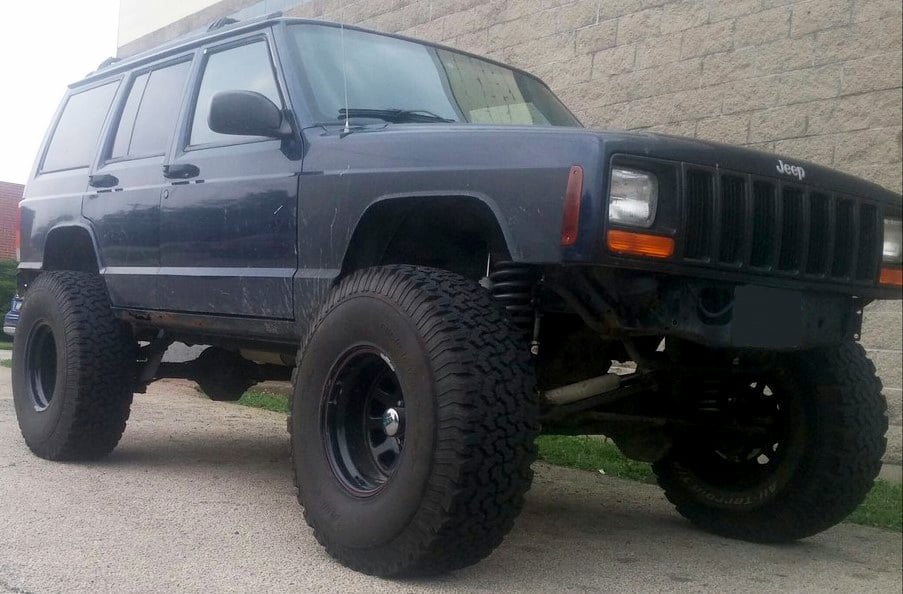Sign up now to join the JEGS email newsletter and be the first to learn about new products, special deals and e-mail only offers!


Camping is a great way to escape the bustle of everyday life—to connect with nature, breathe fresh air, and rejuvenate the mind.
Yet, for many, traditional camping is too rugged, be it the hassle of finding a place to pitch a tent, the pitching process, or the potential for creepy crawlies. RVs are a nice alternative, but not everyone can afford one, let alone keep the tank full or manage the operational intricacies.
Well, good news, rooftop tents make for a fantastic middle ground—more comfortable than a basic tent and less tedious than an RV. What's more, roof tents are often universal, attaching directly to a vehicle's cargo rack.
Is a rooftop tent right for you? Probably, but it ultimately comes down to picking the right one for your needs. To help you in your search, we've compiled our top five rooftop tent picks.
But first, we'll detail how to look for a roof tent based on its size, durability, assembly, and comfort, as well as your roof’s weight capacities. Stay until the end, and we'll also share some installation and usage tips to help you have the best rooftop camping experience possible.
When shopping for a rooftop tent, your first consideration should be its size. Most roof tent models weigh 100 to 200 lbs. and hold between one and four people. But it's not just about the number of sleepers.
You must also factor in the gear you'll bring, the roominess you need, the space on your vehicle's roof, and its impact on fuel economy.
All rooftop tents will reduce fuel efficiency, but larger tents have the biggest impact as they tend to weigh more, which your engine has to work harder to support. What’s more, big tents tend to be less aerodynamic when stowed away, which can increase drag and lower your vehicle's miles per gallon.
For solo campers or couples, a two-person tent often suffices. Families or groups should lean towards a three or four-person.
Next are the weight capacities of your vehicle's roof, specifically its static and dynamic ratings.
Dynamic refers to the safe operating weight while the car is in motion, including the tent's weight, your gear, and even the roof rack. Most cars have a dynamic rating of around 165 lbs.
As for static, this indicates the weight capacity when the vehicle is stationary. Generally, a car's static capacity is at least four times higher than its dynamic rating.
You should also note that roof racks have their own weight limits, so before buying a rooftop tent, be sure to check your owner's manual and rack product details for their specific ratings.
Durability is another key factor in choosing the right rooftop tent. Like any camping gear, your roof tent will be exposed to various elements, from harsh sunlight to heavy rains and possibly even snow.
You should consider the quality of the tent and the materials used, such as the fabric's resistance to UV rays and water. For the best durability, look for tents made of ripstop nylon or canvas and treated with water-resistant coatings.
The tent's frame and zippers also factor in. Opt for high-quality zippers that resist snagging and corrosion. Likewise, a sturdy frame made of corrosion-resistant materials like aluminum or stainless steel ensures the tent holds up, especially during high winds or rough weather.
And then there's the assembly process of a rooftop tent. Generally, most are easy to set up, especially compared to a traditional tent, which can transform your adventures from tedious to delightful.
Some roof tents feature a pop-up mechanism for quick assembly, while others might demand a tad more effort. Clear instructions, possibly with visual guides, are also vital. Look for user-friendly designs, such as color-coded poles or swift-release latches, which help simplify setup. Minimal tool requirements are another bonus.
Some manufacturers also supply assembly videos to make the process even more clear. If not, try searching YouTube to see if any of your fellow travelers have shared their assembly videos.

Last but not least is comfort. The draw of a rooftop tent largely depends on how cozy it is, which often comes down to the quality of the mattress, its ventilation, and its roominess.
For the best rooftop camping experience, consider a tent with a quality mattress, ideally made of high-density foam, as well as mesh windows or air vents to prevent condensation and ensure airflow on warmer nights. Don't forget the importance of a roomy interior with enough space to sit up, stretch, change your clothes, etc.
Finally, while aesthetics might not be your main concern, opting for a tent with large windows or a skylight can make all the difference if you love a good view.
Sign up now to join the JEGS email newsletter and be the first to learn about new products, special deals and e-mail only offers!

The Nomadic series by Overland Vehicle Systems provides the perfect blend of durability and luxury and stands out as a top roof tent pick.
Available in both two and three-person models, these tents guarantee longevity thanks to quality materials like ripstop nylon and a double-insulated base. This durability is further complemented by marine-grade stainless steel hardware built to endure harsh weather conditions.
Inside, a built-in high-density foam mattress ensures restful nights. Other features, such as mesh windows and an aluminum telescoping ladder, add further comfort and safety.
With a setup and stow-away time of just four minutes, the Nomadic series ensures you spend more time enjoying your adventure and less time setting up.

Next up is Rough Country's universal 99057 Hard Shell. Inside, a two-inch high-density foam queen mattress comfortably sleeps two to three people. Large side windows ensure a refreshing airflow, while the rainfly offers shelter during downpours. Setup is quick and easy, allowing you to set up camp in mere minutes.
Additionally, the 99057 is built to last, thanks to ripstop fabric that protects against tears and holes and built-in UV protection to keep the material resilient.
Supported by an aluminum frame, this tent also features an extendable ladder reaching up to 95", ensuring easy entry and exit. With all these features, Rough Country's tent promises both convenience and durability for all your adventures.

And then there's the Rugged Ridge Rooftop tent, tailored for adventure enthusiasts. This roof tent is a universal fit for Jeeps, trucks, and SUVs boasting a compatible rack system.
Inside, a three-inch high-density foam mattress means restful sleep for up to three people, with a commendable load capacity of 660 lbs. Moreover, the tent's 95”W x 56”L x 51”H dimensions ensure ample space.
A robust layered aluminum base supports this spacious roof tent, matched with a waterproof poly-coated polyester shell for maximum protection.
Enter via an extra-wide anodized aluminum ladder, providing steady and safe access. As for setup, the tent neatly folds into a durable PVC cover, saving space and reducing drag.

Next on our roof tent lineup is the three-person Wilco Offroad Rooftop XP3. Constructed with sturdy lightweight aluminum and resilient ripstop fabric, the XP3 is every adventurer's dream.
Inside, the integrated skylight allows for peaceful stargazing, while the comfortable mattress ensures a dreamy night's sleep. What's more, thanks to a removable rainfly, you'll enjoy extra protection from unpredictable showers.
Set up is also a breeze: arrive, unfold, and rest. To pack up, just fold the tent, secure the cover, and you're off. The XP3 also fits most aftermarket crossbars and roof racks and can even be upgraded via an optional lower annex.

Last up is the Thule Tepui Explorer Ayer 2, an affordable two-person roof tent from a reputable brand. But affordable doesn't mean cheap; this tent still offers solid durability thanks to its poly-cotton material.
Additionally, skylights and windows offer a unique stargazing experience while providing fantastic ventilation, and exterior attachment points allow for lamps or storage add-ons. Moreover, mesh panels boost airflow, four spacious pockets keep your gear organized, and a 2.5-inch high-density foam mattress ensures a good night's rest.
Finally, the Tepui Explorer Ayer 2 easily fits on most aftermarket crossbars and roof racks, and when you're ready to pack up, just fold, zip, and be on your way.

Thanks for reviewing our guide to the best rooftop tents. For all your roof camping needs, consider JEGS. We have tents for trucks, SUVs, and cars, as well as many optional add-ons, such as annexes, canopies, and much more.
Still have questions? Contact our team today.




